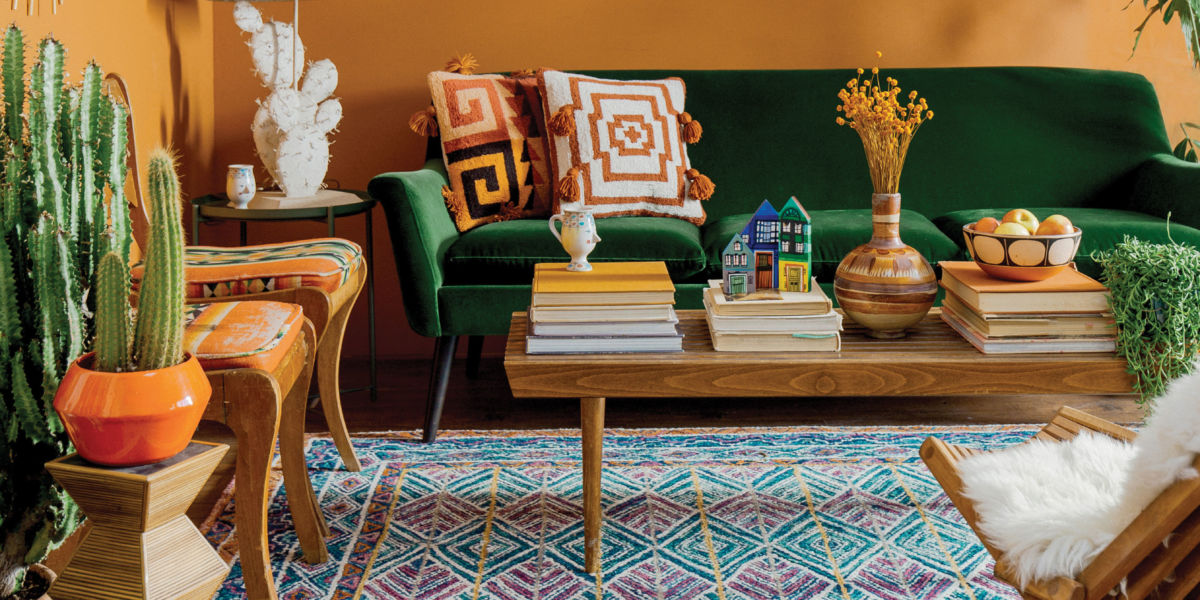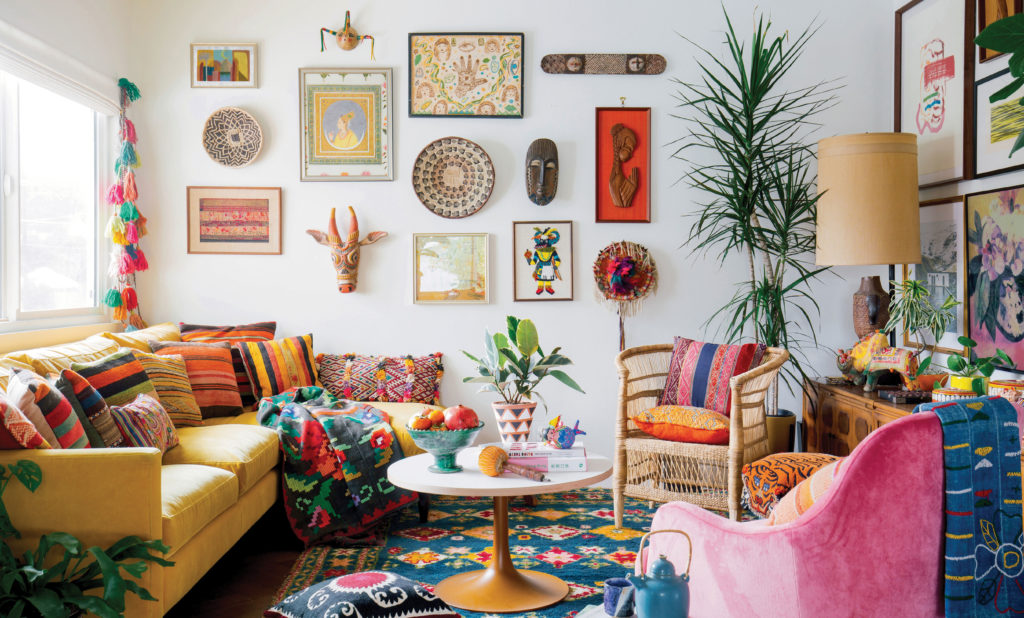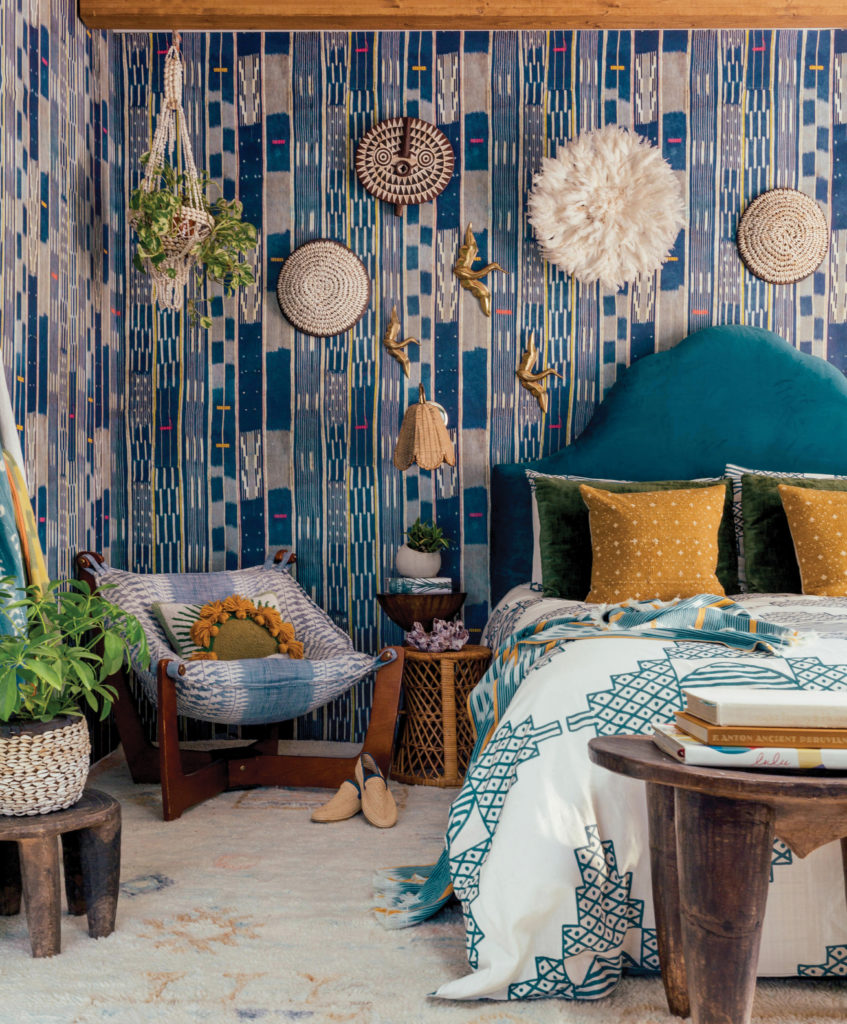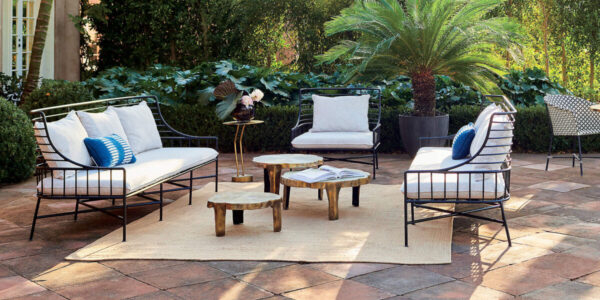
Designer Justina Blakeney’s Global Style Is a Little Extra (And We Love It That Way)
In Justina Blakeney’s third and most personal book, the designer and artist shares the stories and inspiration behind her multicultural, more-is-always-more style.

We only recommend things we love. If you buy something through our site, we might earn a commission.
It’s been twelve years since Justina Blakeney started her design blog, Jungalow, the platform she used to spin her devotion to eclectic maximalism into a beloved brand. Today, her name and “New Bohemian” trademark are synonymous with global boho style and an outsize appreciation for houseplants (she has over 50 in her own Los Angeles home).
Blakeney has been generous about sharing what inspires her from the beginning, offering up countless ideas and how-tos to her 3.5 million social media followers. But it wasn’t until she started writing her third design book, Jungalow: Decorate Wild, that she started digging even deeper into the genesis of her aesthetic, the why that drives the what. Blakeney uses the book as an opportunity to unpack her personal history, and her travelogues, to explain the roots of her layered, exuberant perspective.
“It all goes back to the story of my childhood home and my parents, and my style reflects the story of who they are,” says Blakeney, who grew up in Berkeley with academic parents who filled their home with a love of ideas, culture, and travel. Blakeney’s father is Black and Native American, and her mother is Jewish of Eastern European descent. She understands better than anyone that two seemingly disparate cultures can come together and create something wholly original and unique in its beauty.
“It’s a healthy, beautiful way to approach the world, and it’s almost cathartic for me to think about it this way. We’re all mixed. I often felt like an outsider coming from two different cultures, but we’re all a mashup of so many different things,” she says.
To illustrate the point, Blakeney chose a handful of disparate-seeming styles and combined them to create new looks that challenge conventional labels. All of which are explored with stunning photographs from her own journeys around the world. Her point of view and experiences seem even more valuable seen through the lens of 2020 and the important conversations about race and ethnicity society has grappled with over the last year.
“As I was writing this [book], and with everything happening around the social justice movement, I was very sensitive to cultural appropriation,” she says. “Think about what you’re buying, where you’re getting it from, and who is profiting from it. Bring it into your home with respect. As long as you’re doing that, I think it’s absolutely wonderful.”
New Mexi-Copenhagen

Courtesy of Dabito
Once you get past the obvious differences in climate and natural palette, the dusty red clay of the arid American Southwest compared to the wet and wintry forest greens and icy whites of Scandinavia, the two aesthetics aren’t as opposite as they seem. The stark simplicity of adobe architecture meshes nicely with that famous Danish modern point of view, and the two styles embrace down-to-earth, hand-woven textiles.
To get the look, start with the boxy Scandinavian-inspired Sven chair from Article.
Toss in a rustic pillow made of locally spun wool from Chama, New Mexico.
Turk-xican

Courtesy of Dabito
Turkey and Mexico, two countries on opposite sides of the globe, have surprisingly simpatico decorative styles. Both are known for romantic, hand-painted ceramics, rich colors, detailed rugs, and rustic furnishings.
Hand-stitched Turkish Suzanis and Mexican Otomi embroidery are very similar in style, featuring floral and fruit motifs in hand-stitched designs. Combine the styles for a colorful and cozy sitting room.
Blakeney suggests anchoring the room with rustic Equipale chairs from Mexico.
Layer in vibrant hand-sewn Suzani textiles such as this throw pillow.
West Afri-Coastal

Courtesy of Dabito
On Blakeney’s list of must-see places, Africa is at the top. “I just want to explore the continent,” she says. “My own heritage comes from West Africa. And coastal décor is what I grew up with in California.” Both styles celebrate found natural materials and the color blue. “I wanted to figure out how to blend these two design philosophies with artifacts and ideas that feel really fresh.”
Begin with beachy wicker accessories like this lamp from Serena & Lily.
Add a stool or bench upholstered with hand-dyed African mudcloth.
From the 2021 Gardening Issue
To read: Click on the right and left arrows at the edge of the box to turn pages; to make the text larger, click on the fullscreen icon in the lower-right corner (desktop) or in the center (mobile.)
Get one year of Sunset—and all kinds of bonuses—for just $24.95. Subscribe now!
